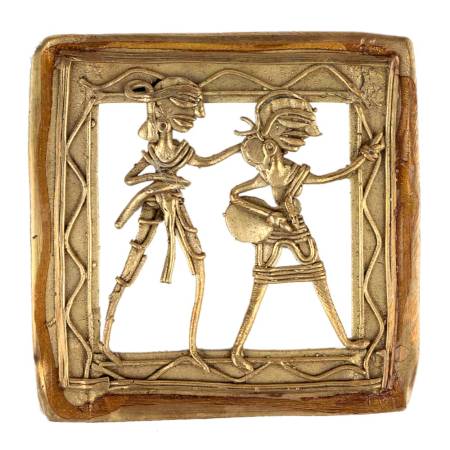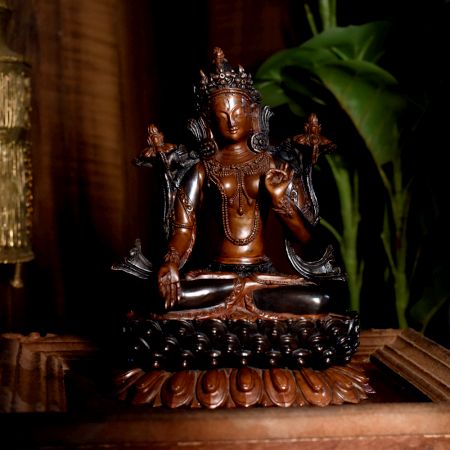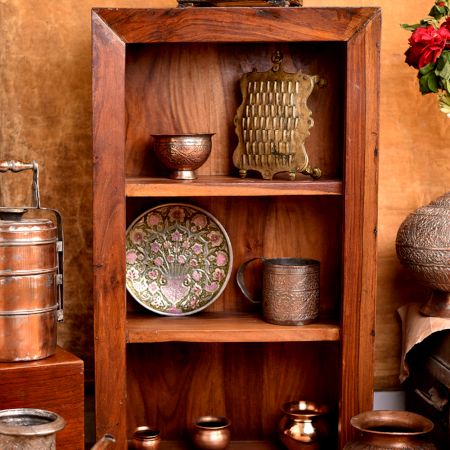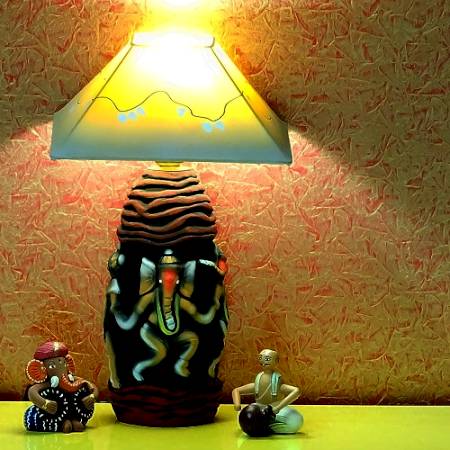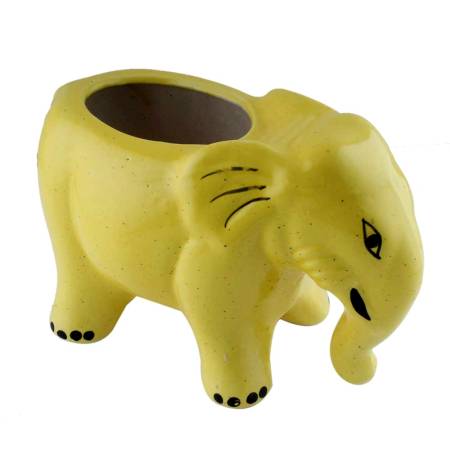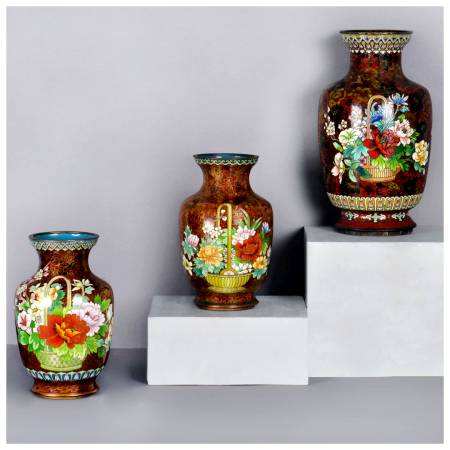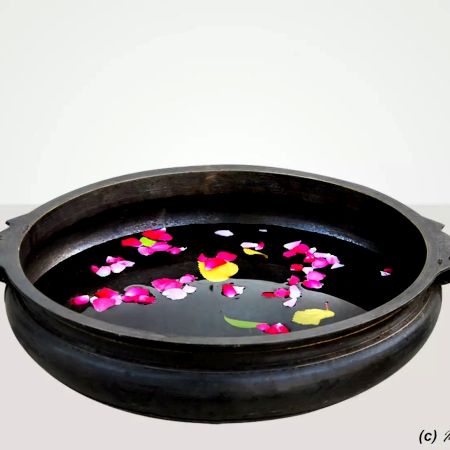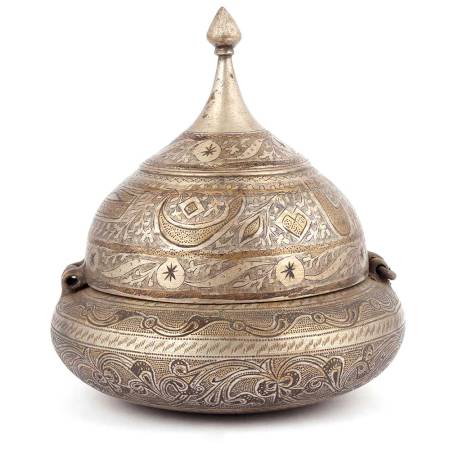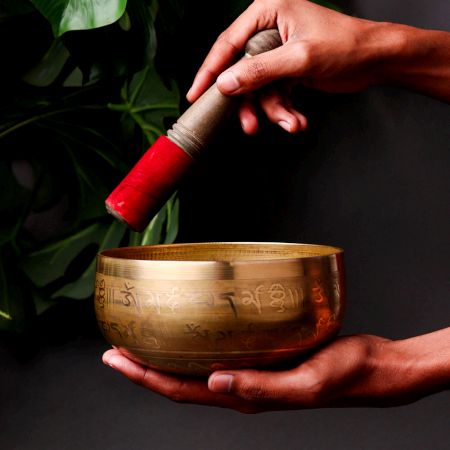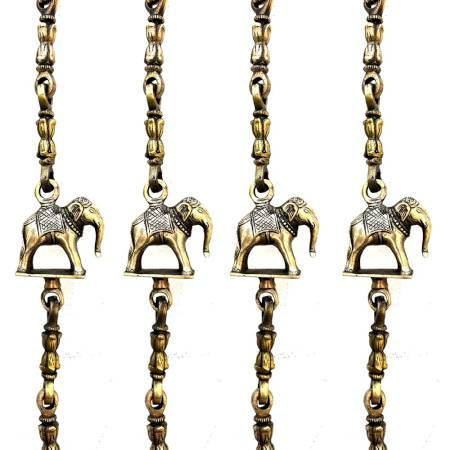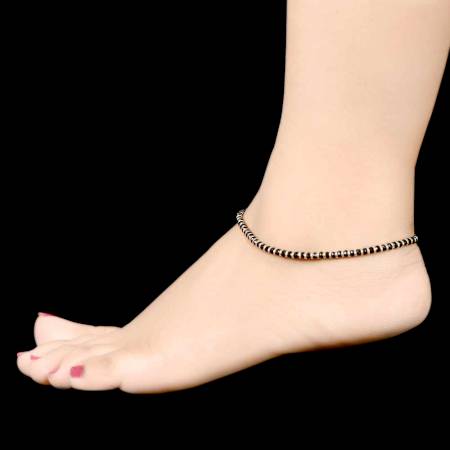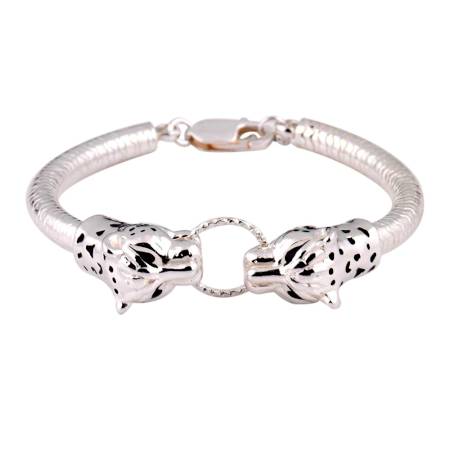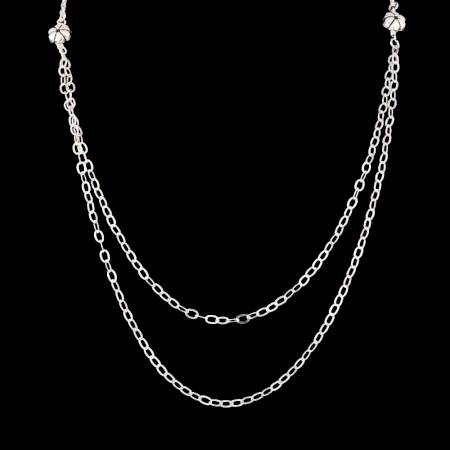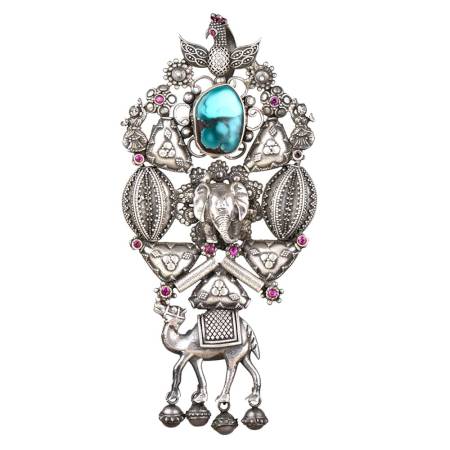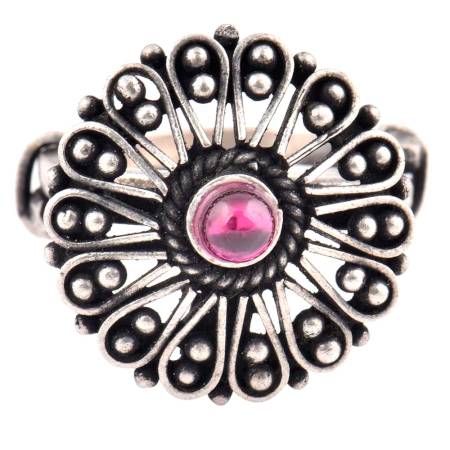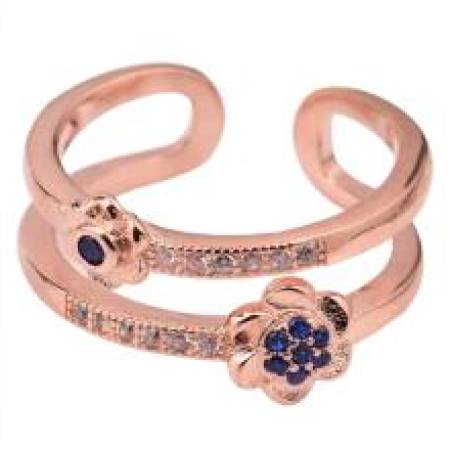Handmade Pure 925 Sterling Silver Necklace with Amethyst Drop Pendant for Women
-
₹ 764.40
₹ 1,092.00 -
Only a few left
A Black Thread Cotton Dori Oxidised Silver Music Note Charm Necklace
-
₹ 23,418.34
₹ 24,588.76 -
Only 1 left
92.7 Sterling Silver Red Garnet Beaded Fringed Necklace
-
₹ 12,420.09
₹ 13,040.83 -
Only 1 left
Explore the Beauty of Silver Necklaces
Silver necklaces have long been a symbol of beauty, simplicity, and grace. They carry the essence of tradition and the pulse of modern aesthetics, making them a timeless choice in jewelry. Each piece tells a quiet story of craftsmanship, sentiment, and personal expression. From the fine shimmer of sterling chains to ornate pendants steeped in regional artistry, silver necklaces find space in both everyday wear and ceremonial grandeur. Their neutral tone complements every skin shade, every attire, and every mood. A silver necklace isn’t just an accessory, it’s a statement of refined taste and enduring charm.
What Is A Silver Necklace?
A silver necklace is more than a strand of metal, it’s a manifestation of purity, elegance, and subtle power. Crafted from sterling or pure silver, it often becomes a companion to one’s style journey. Sterling silver, marked as 925, blends durability with brilliance, making it the preferred choice for daily wear. Historically, silver was prized for its rarity and connection to the moon, symbolizing intuition and serenity. Today, it continues that legacy, gracing modern outfits while holding cultural roots. Whether a delicate chain resting lightly on the collarbone or an intricate pendant celebrating heritage, each design serves a purpose. Its visual softness appeals to minimalists, while the sheen draws collectors and romantics alike. From Indian temple art to contemporary global fashion, silver necklaces effortlessly adapt, offering both sentiment and sophistication.
What Designs Or Styles Are Common In Silver Necklaces?
Silver necklaces embrace diversity in form and sentiment. Chains remain the most adaptable style, sleek, versatile, and perfect for layering. Pendants tell personal stories, often shaped as hearts, leaves, or celestial forms. Traditional chokers and temple-inspired lockets draw from Indian and tribal artistry, connecting wearers to their roots. Handcrafted ethnic motifs reveal intricate filigree or meenakari work that transforms the necklace into wearable art. Oxidized silver adds character, darkened grooves that highlight design depth, ideal for bohemian or earthy aesthetics. In contrast, polished silver mirrors modern sensibilities, minimal yet magnetic. The variety speaks to universal appeal, urban, traditional, and everything between. What unites these designs is intention, to frame individuality through silver’s luminous language. Each piece, handcrafted or machine-finished, retains an emotional pulse, merging art, culture, and function.
Why Are Silver Necklaces Popular Across Generations?
The enduring popularity of silver necklaces stems from their ability to adapt across time, fashion, and meaning. For older generations, silver represents purity, blessings, and family heritage, often gifted during milestones or rituals. For the younger, it reflects minimalism and authenticity, offering an affordable luxury that complements evolving tastes. The metal’s versatility allows it to shift effortlessly from ethnic elegance to contemporary chic. Beyond appearance, silver’s hypoallergenic quality adds comfort and practicality. Its subtle gleam suits all seasons and styles, pairing beautifully with fabrics, tones, and moods. Symbolically, silver bridges emotion and memory, connecting wearers through heirlooms or personal choices. It’s a piece that never feels dated, only rediscovered. Whether worn as protection, adornment, or expression, its timelessness lies in its honesty, a balance of sentiment and style that continues to charm every generation.
Craftsmanship, Materials & Techniques in Silver Jewelry
The artistry of a silver necklace is born from precision and patience. Each curve, cut, and clasp tells of hours spent at a silversmith’s bench. Tradition meets innovation, hand tools merge with casting molds, bringing life to metal. The making is not mechanical, it’s meditative. Artisans translate centuries-old methods into modern wearability. From shaping molten silver to brushing the final polish, every stage adds character. Craftsmanship defines authenticity, it’s what makes one necklace sing differently from another.
How Are Silver Necklaces Traditionally Crafted?
Traditional silversmithing is an art rooted in rhythm and detail. The process begins with melting pure or sterling silver, then casting or hammering it into shape. Each link of a chain is formed, soldered, and filed by hand. Once the structure is ready, artisans use fine tools to carve, engrave, or emboss motifs, floral, geometric, or symbolic. Polishing follows, giving the necklace its reflective allure. In some regions, the process includes oxidation, adding contrast and depth to patterns. These age-old methods, passed down through generations, carry stories of families and craftsmanship rather than factories. Today, modern casting and laser techniques enhance precision but never replace the human touch. Whether it’s a tribal torque or a contemporary pendant, traditional crafting remains central to the soul of silver jewelry, balancing skill, patience, and cultural continuity.
What Types Of Silver Are Commonly Used?
Among the various grades of silver, sterling silver stands as the most trusted for jewelry. Containing 92.5% pure silver and 7.5% alloy metals like copper, it balances softness with durability, ensuring long-lasting shine and structure. Fine silver, with 99.9% purity, offers a richer luster but is often too delicate for intricate designs. Coin silver and Argentium silver bring unique traits, improved tarnish resistance and brilliance. In India, tribal jewelry often uses oxidized or unrefined silver, creating pieces with an ancient, raw finish that appeals to traditional sensibilities. Globally, sterling remains the favorite because it captures both strength and sophistication. Its hallmark, 925, assures authenticity and purity, building trust between artisan and wearer. Choosing the right type of silver shapes not just durability, but emotion, a balance between what endures and what shines.
How Do Artisans Add Detail Or Texture?
Detailing in silver jewelry transforms metal into meaning. Artisans use engraving to etch delicate lines, stories told through strokes. Filigree work, a signature of Indian and Middle Eastern craftsmanship, weaves fine silver threads into lace-like patterns. Oxidation deepens visual texture, lending the piece a vintage aura. Granulation involves attaching tiny silver beads, creating intricate designs with tactile depth. Stone inlay work brings vibrancy, turquoise, coral, or moonstone enhancing the metal’s calm glow. Repoussé and chasing add sculptural dimension, turning surfaces into living reliefs. Each technique requires an intuitive feel for pressure, heat, and precision. The smallest imperfection can change the piece’s emotion. In blending these methods, artisans create necklaces that feel alive, every ridge, every shine, carrying the whisper of human touch.
Design Intent & Aesthetic Expression
Silver necklaces are not mere adornments, they’re extensions of personal stories. Each design carries intent, whether rooted in ritual, memory, or style. The way a necklace rests on the body, catches light, or evokes nostalgia defines its aesthetic. The beauty of silver lies in its adaptability, it speaks both of earth and ether, modernity and myth. Through symbolism and craft, it captures the soul of its culture while reflecting the wearer’s identity.
What Do Silver Necklaces Symbolize?
Silver necklaces symbolize purity, clarity, and balance, qualities associated with the moon and emotional intelligence. In many cultures, silver represents protection from negative energy and alignment with spiritual calm. Indian traditions see it as a metal of prosperity, worn during auspicious occasions to attract blessings. Across Western cultures, silver jewelry often embodies timeless love or personal milestones, engraved with initials or memories. The symbolism also lies in duality, its cool shine reflects light but remains understated, like strength beneath gentleness. Wearing silver becomes a quiet act of self-expression, a reminder of both fragility and endurance. Each necklace, whether simple or ornate, holds meaning that goes beyond ornamentation, it becomes part of one’s emotional fabric, carrying sentiment, history, and hope.
How Do Artisans Reflect Culture Through Design?
Artisans mirror their surroundings, beliefs, and traditions in the silver they mold. In Rajasthan, motifs inspired by peacocks, lotuses, and temple domes echo India’s artistic heritage. In tribal regions, bold oxidized pieces feature sun, moon, and animal symbols, narratives of nature and ancestry. Global styles reinterpret this through minimalism or geometric symmetry, reflecting urban identities. Each pattern, curve, and clasp becomes a cultural signature, a visual dialect of community and memory. Handcrafted necklaces bridge generations, preserving stories once told through folklore or ritual. By embedding regional elements into contemporary designs, artisans ensure that culture evolves yet remains recognizable. The necklace thus becomes not just wearable art but a cultural document, a moving archive of human creativity and belonging.
How Do Finish And Shine Affect The Look?
Finish defines emotion in silver. A high-polish finish radiates clarity and refinement, ideal for formal elegance and modern minimalism. It captures light and mirrors movement, symbolizing openness and optimism. In contrast, oxidized silver tells a different story, of age, heritage, and depth. Its darkened tones evoke nostalgia, grounding the wearer in history. Matte or brushed finishes sit in between, offering subtlety and texture for everyday wear. Each finish changes how silver interacts with skin tone, light, and fabric. Culturally, polished silver reflects celebration, oxidized pieces often symbolize heritage or craft identity. The artistry lies in knowing what to leave bright and what to darken. The right balance can turn metal into mood, transforming a simple necklace into an experience of light, memory, and time.
Purchase, Authenticity & Investment Value
Buying a silver necklace is not just a purchase, it’s an emotional and aesthetic choice. The metal carries a sense of refinement, tradition, and permanence that appeals to collectors and everyday wearers alike. Genuine silver has a presence, its tone, texture, and weight communicate authenticity. Today’s buyers seek pieces that balance design integrity with material purity. Whether sourced from traditional silversmiths or contemporary jewelers, what matters is the story behind it. A hallmark on the clasp, a certificate of purity, or the subtle irregularities of handcrafting, each detail defines trust. Owning real silver is not merely about beauty, it’s about belonging to a lineage of artistry that never fades.
Where Can You Buy Genuine Silver Necklaces?
Genuine silver necklaces are best purchased from trusted hallmark-certified jewelers or authorized online platforms that specialize in artisanal and handcrafted jewelry. Traditional markets in India, such as Jaipur or Kerala, still carry a deep-rooted silver culture where craftsmanship remains transparent and traceable. Online marketplaces like IndianShelf, featuring verified artisans often list purity and hallmark details clearly. It’s essential to verify seller reviews, hallmark certifications, and return policies. In some regions, local silversmiths provide customized designs, adding personal value beyond mass production. When buying abroad, always confirm regional purity standards such as 925 or sterling marks. True authenticity lies in traceability, knowing where the metal originated and who shaped it. Choosing such pieces ensures both aesthetic satisfaction and long-term worth.
How Can You Verify Purity And Authenticity?
Purity in silver jewelry is measured through its hallmark, the 925 stamp is the universal assurance of sterling quality. It represents 92.5% pure silver alloyed with minimal metals like copper for durability. Authenticity certificates issued by reputable sellers or assay offices add further proof. Visually, real silver has a distinct cool luster and feels slightly heavy compared to imitations like plated brass. Conducting a magnet test also helps, as pure silver is non-magnetic. When purchasing heritage or antique pieces, documentation from certified jewelers or independent appraisers is crucial. In handmade creations, artisans often include regional marks or engravings, echoing centuries-old authenticity traditions. Verifying purity not only protects against counterfeit metals but ensures lasting brilliance, structural integrity, and emotional trust, qualities that define true silver craftsmanship.
Do Silver Necklaces Hold Investment Value?
Silver necklaces carry both emotional and monetary value. While not as high-priced as gold, silver’s demand continues to grow due to its use in jewelry, art, and even technology. Handcrafted or antique silver pieces, especially those with cultural or regional significance, appreciate in worth over time. Their value extends beyond market rates, it’s in craftsmanship, rarity, and design story. Vintage temple jewelry, for instance, fetches high collector interest due to its historical detailing. Modern investors also view silver jewelry as a tangible, wearable asset. Properly maintained, hallmarked silver retains its radiance and liquidity, making it a flexible investment. As cultural heirlooms, they bridge generations, carrying memory and value in equal measure.
Care, Cleaning & Maintenance
A silver necklace requires care to preserve its shine and sentiment. Silver reacts to air and moisture, forming tarnish over time. Yet, with mindful upkeep, it can last decades. Cleaning and storing it properly helps maintain not just its appearance but its emotional presence. The effort reflects respect, for the craft, for memory, for continuity. A well-kept silver piece gleams not only with polish but with personal history.
How Should You Clean A Silver Necklace?
Cleaning silver demands patience and gentleness. Use mild soap mixed with lukewarm water, dipping a soft cloth or sponge to wipe away dirt and tarnish. For deeper cleaning, a small amount of baking soda paste can lift oxidation without scratching. Rinse thoroughly and dry with a microfiber cloth. Avoid harsh chemicals, toothpaste, or abrasive pads, they strip the natural luster and weaken the surface. Regular light polishing after wear prevents tarnish buildup. Traditional Indian methods, like using ash or tamarind water, remain effective for uncoated silver but must be used carefully. Cleaning isn’t just maintenance, it’s ritual care, keeping the metal’s memory alive while ensuring it remains ready for the next occasion, polished in both surface and sentiment.
How Should You Store Silver Jewelry?
Storage plays a crucial role in preserving silver’s natural glow. Always store necklaces in airtight pouches or anti-tarnish boxes to limit exposure to air and humidity. A cool, dry space away from sunlight prevents oxidation and discoloration. Wrapping each piece separately in soft fabric avoids scratches or tangles. Avoid plastic containers, as they can trap moisture. For long-term preservation, adding silica gel or activated charcoal nearby helps absorb humidity. In traditional Indian households, silver is often stored with camphor or dried neem leaves, natural protectants that prevent dullness. Proper storage keeps the necklace not only untarnished but emotionally intact, ready to be worn without losing its original grace.
Can Tarnished Silver Be Restored?
Tarnished silver can always be brought back to life. Professional polishing restores its brightness without damaging the structure. Jewelers often use ultrasonic machines or soft chemical dips to remove tarnish evenly. At home, gentle solutions like vinegar and baking soda can also revive its gleam with care. Oxidized designs, however, require special attention, as over-cleaning may remove intentional dark tones. Restoration isn’t just physical renewal, it’s reclaiming a piece’s essence. Each polish renews the bond between wearer and object, allowing silver to age beautifully rather than deteriorate. True restoration respects the metal’s story, reviving not just its shine but its soul.
Styling & Fashion Integration
Silver necklaces carry a quiet versatility that transcends trends. Their neutral tone adapts to changing moods, fashion eras, and cultural expressions. They enhance an outfit’s emotion, sometimes grounding it, sometimes elevating it. Styling with silver isn’t about decoration, it’s about alignment between personality and design. Every combination tells a new story.
How Can Silver Necklaces Enhance Your Outfit?
A silver necklace can transform attire through contrast and complement. Its cool tone balances bold colors and soft fabrics alike. For festive occasions, it adds an ethereal gleam, for everyday wear, it introduces understated elegance. Layered chains bring rhythm to casual looks, while statement pendants anchor formal ones. The beauty of silver lies in its neutrality, it pairs seamlessly with whites, blues, blacks, and earthy hues. In Indian fashion, oxidized necklaces frame ethnic sarees and kurtas with effortless charm, while sleek sterling pieces suit minimal western outfits. The result is always the same, a quiet sophistication that never overshadows the wearer but completes them.
What Fashion Styles Pair Well With Silver Jewelry?
Silver’s versatility bridges cultures and wardrobes. It complements bohemian and ethnic aesthetics through oxidized, handcrafted designs, while polished and geometric pieces enhance formal or minimalist looks. Pairing a tribal necklace with cotton or linen outfits creates a grounded, artistic appearance, while sleek chains elevate office wear. Silver reflects individuality, it adapts to mood and meaning. In global street fashion, layering silver chains with casual shirts or dresses adds effortless edge. In traditional ensembles, it connects the present with heritage. Whether paired with denim or silk, the metal’s neutral allure ensures balance. It’s timeless because it listens to its surroundings and reflects them without overpowering.
How Do You Choose The Right Necklace Length And Design?
Choosing the perfect length depends on intent and occasion. Shorter chains rest near the collarbone, ideal for layering or everyday wear. Medium lengths with pendants draw attention to the neckline, balancing both elegance and ease. Longer necklaces make statements, often paired with ethnic or high-neck outfits. The design should resonate with personality, a minimal chain for subtlety, an ornate pendant for expressiveness. Comfort matters as much as aesthetics, lighter pieces suit daily use, while structured chokers enhance ceremonial or formal looks. In essence, choosing the right necklace is about rhythm, between proportion, intent, and individuality, allowing silver to move naturally with the wearer’s story.
Cultural Significance & Heritage
Silver necklaces have been more than ornaments; they are carriers of stories, beliefs, and identity. Across centuries, silver has symbolized purity, reflection, and endurance. Its association with moonlight, calmness, and emotional clarity runs deep in cultural consciousness. In India, silver is worn to ward off negative energy and attract prosperity. Among desert tribes, it is a sign of strength and social standing. Every pattern etched or molded carries a local dialect of craftsmanship. From the delicate filigree of Odisha to the bold tribal neckpieces of Rajasthan, silver remains an archive of regional imagination. Each necklace becomes not just jewelry, but a reflection of history shaped by touch, ritual, and time.
What Is The Cultural Importance Of Silver Necklaces?
Silver necklaces hold cultural importance as symbols of purity, spiritual protection, and wealth across civilizations. In India, newborns often receive silver jewelry for protection against the evil eye, while brides wear heavy silver pieces as blessings of abundance. In ancient Greece, silver was linked with Artemis, the moon goddess, representing balance and emotional strength. The metal’s cool tone, unlike gold’s radiance, embodies humility and reflection, virtues often associated with wisdom. Even today, wearing silver signifies continuity with ancestral traditions. Its use in rituals and ceremonies remains a vital part of communal identity, bridging the sacred and the personal. For many, silver’s allure lies not in opulence but in its honesty, carrying forward the quiet power of heritage through each design and detail.
How Have Silver Designs Evolved Across Regions?
Silver designs have traveled through time and continents, evolving with shifting aesthetics yet retaining their soul. In tribal regions, bold handcrafted forms reflected social identity, often infused with symbols of fertility or courage. In the Mughal era, intricate carvings and filigree transformed silver into ornamental poetry. Mexico’s Taxco silver introduced fluid, sculptural forms, blending indigenous artistry with modernist sensibilities. Turkish artisans combined geometric patterns with floral intricacy, creating pieces of spiritual balance. Modern designers reinterpret these traditions with minimalism, cleaner lines, and sustainable methods. The evolution of silver jewelry reveals more than changing fashion; it mirrors how societies redefine beauty while preserving emotional continuity. Each necklace tells the story of its geography, craftsmanship, and the hands that shaped it.
Which Cultures Are Known For Iconic Silver Jewelry Crafting?
Certain cultures have turned silver craftsmanship into an art form. India remains unmatched in diversity, with each state producing distinct designs, from temple-inspired Tamil silver to tribal Dhokra motifs. Mexican artisans from Taxco are globally revered for reimagining silver into bold, fluid sculptures that merge heritage with innovation. In Turkey, silver takes a sacred role through Ottoman-inspired patterns and delicate filigree, often seen in prayer accessories and wedding ornaments. Beyond these, Nepal and Bali contribute spiritual and nature-inspired designs rooted in folklore. These traditions endure because they merge craft and emotion, technique and mythology. Iconic silver jewelry from these cultures transcends ornamentation, becoming a silent language of heritage, craftsmanship, and identity passed through generations.
Silver Necklaces vs Other Jewelry
Silver necklaces occupy a distinct space between elegance and approachability. Their tone is cooler than gold, yet warmer than platinum. They fit effortlessly within both modern and traditional aesthetics. Unlike trend-based accessories, silver carries permanence. It does not just adorn; it endures.
How Do Silver Necklaces Differ From Gold Or Platinum?
Silver differs from gold and platinum in tone, texture, and emotional expression. Gold radiates opulence, platinum reflects prestige, while silver embodies calm and connection. It is lighter, more flexible, and easier to mold into intricate designs, making it ideal for everyday wear and artistic experimentation. Its cooler hue complements all skin tones, offering understated grace without excess. While platinum dominates luxury, silver retains accessibility, inviting personal rather than social expression. Economically, silver remains attainable yet collectible, allowing wearers to own artistry without extravagance. For those who value meaning over display, silver bridges emotion with design, offering quiet sophistication that feels human and timeless.
What Sets Silver Apart From Fashion Jewelry?
Silver stands apart from fashion jewelry because it carries permanence, purity, and value. While fashion pieces often rely on plating or imitation metals, silver maintains its integrity over years of wear. Its composition, especially sterling silver, retains luster even with minimal care. Beyond material difference, silver carries emotional weight. It is often gifted, inherited, or bought as a milestone. Artificial jewelry fades with time, but silver matures, growing character with each scratch or polish. Its patina tells stories of use and belonging. For those drawn to authenticity and longevity, silver remains the meeting point between style and sincerity, between affordability and artistry.
How Does Silver Compare To Oxidized Or Mixed Metal Jewelry?
Silver, oxidized silver, and mixed metal jewelry each evoke distinct moods. Pure silver offers clarity and reflection, ideal for formal and minimal aesthetics. Oxidized silver, darkened through controlled exposure, conveys rustic charm and artistic depth, often used in ethnic or tribal designs. Mixed metals, where silver meets copper or gold, create visual contrast that feels modern and bold. The choice between them depends on intent, whether one seeks purity, texture, or experimentation. Oxidized pieces connect with tradition and earthy elegance, while polished silver and mixed tones define urban, contemporary expression. Together, they show how one metal can adapt endlessly, carrying both heritage and innovation within its shine.
Emotional & Sentimental Value
Silver necklaces hold emotional resonance that transcends aesthetics. They are gifts of memory, anchors of identity, and vessels of affection. The moment one receives or wears silver, it gathers meaning, transforming into something deeply personal. Its gleam reflects not just light, but sentiment.
Can Silver Necklaces Make Meaningful Gifts?
A silver necklace makes a gift that endures beyond the moment of giving. It signifies love, protection, and permanence. Across cultures, gifting silver is an expression of emotional care and shared history. It is often chosen for milestones such as birthdays, weddings, and anniversaries because it embodies continuity and grace. Unlike trends that fade, silver holds a tactile sincerity. Its weight feels intentional. The symbolism of silver as a conductor of energy also connects it with emotional healing. Whether it is a delicate chain or a bold pendant, each piece becomes a reminder of presence, a tangible echo of affection. To gift silver is to offer something that remembers.
What Emotional Value Do Heirloom Silver Pieces Carry?
Heirloom silver necklaces are fragments of living memory. Passed down through generations, they embody the warmth of family lineage. Each mark, polish, or engraving tells of moments shared and celebrations lived. In Indian households, a grandmother’s silver chain often becomes the most cherished possession, connecting descendants across time. Such pieces are not valued by weight but by sentiment. They preserve touch, scent, and emotion in metal form. The act of inheriting silver continues tradition while grounding one’s sense of belonging. Beyond heritage, it is a transfer of love that does not diminish. It transforms, quietly carrying forward the weight of remembrance.
Why Do People Feel Connected To Silver Jewelry?
People connect with silver because it mirrors emotion. Its surface reflects without overwhelming, its tone soothes without demanding. The metal feels alive. It changes, reacts, and ages gracefully with its wearer. Culturally, silver symbolizes clarity and resilience. Personally, it represents quiet confidence. Wearing silver can feel like grounding energy, a balance between the spiritual and the material. Its simplicity allows it to adapt, becoming what the wearer needs, strength, memory, or beauty. This emotional link is why silver never goes out of style. It resonates with those who seek meaning in material, turning metal into memory, and adornment into essence.
Frequently Asked Questions (FAQs)
What Defines A Necklace As Silver?
A silver necklace is defined by its composition, primarily made of 92.5 percent pure silver mixed with 7.5 percent alloy metals, usually copper, to enhance durability. This balance ensures both shine and strength, making it suitable for crafting intricate jewelry. Historically, silver has symbolized clarity and purity, finding a place in both ceremonial ornaments and daily adornments. The sterling standard became globally recognized for maintaining this integrity of metal. Its distinct hue, reflective surface, and soft texture allow artisans to mold expressive designs that carry both aesthetic and cultural depth, making silver a timeless medium for personal expression.
Can Silver Necklaces Tarnish Over Time?
Yes, silver necklaces can tarnish when exposed to moisture, air, or sulfur compounds present in the environment. The surface darkens, forming a patina that some even find visually appealing for its vintage charm. However, tarnish doesn’t signify damage. A simple cleaning routine using mild soap, polishing cloths, or natural solutions like baking soda can restore the original shine. Regular wear also slows oxidation since the friction against skin minimizes buildup. In many cultures, silver tarnish represents the passage of time and authenticity, making its restoration not just maintenance but a ritual of renewal and connection with the jewelry’s legacy.
Are Silver Necklaces Suitable For Daily Wear?
Yes, silver necklaces are ideal for everyday use because of their lightness, comfort, and understated elegance. Sterling silver adapts easily to various outfits, from ethnic ensembles to contemporary wear. Its neutral tone complements every skin shade, making it versatile for both men and women. Over time, it molds to personal style, reflecting a sense of familiarity and intimacy. Regular wear, however, requires mindful care, avoiding chemicals, perfumes, or prolonged humidity keeps it radiant. The everyday silver piece often becomes more than an accessory; it transforms into an emotional marker of daily moments, blending durability with effortless sophistication.
Can Silver Jewelry Be Customized Or Engraved?
Yes, silver jewelry lends itself beautifully to customization and engraving. Its malleability allows artisans to etch initials, dates, or symbols, turning a simple ornament into a deeply personal treasure. In many traditions, customized silver pieces are exchanged to mark love, blessings, or milestones. The reflective surface enhances engravings, capturing light and memory together. Stones, charms, or motifs can be added for individual flair without compromising the metal’s essence. Whether crafted for gifting or self-expression, a personalized silver necklace carries a story, etched in metal, worn close to the heart, and preserved as a symbol of enduring identity.
